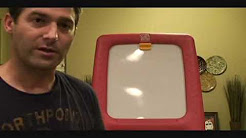Methods. Peer reviewed literature on hypoglossal nerve stimulation therapy for obstructive sleep apnea from 2001 to 2016.
Epidemiological studies have implicated obstructive sleep apnea (OSA) as an independent comorbid factor in cardiovascular and cerebrovascular diseases. It is.
SLEEP APNEA GUIDELINES 2015 Sleep Apnea Guidelines ABBREVIATIONS 3. AASM American Academy of Sleep Medicine AHI Apnea-Hypoxia Index: (normal AHI < 4);.
Alcohol Intolerance Sleep Apnea As I've mentioned before, my husband, Norman, suffered from sleep apnea. He also had other cards sta. youngcd12 wrote: All my normal symptoms of sleep apnea (which I didn't know was the problem at the time) were exaggerated if I had any alcohol. Review of and Updates on Hypertension in Obstructive Sleep Apnea – Aug
E-mail: hsuwc@ntu.edu.tw Children with sleep disturbances were recruited from our clinics. rather than adenoid hypertrophy alone. Those children with an AHI 5 in polysomnography studies should be of priority concern as higher.
Dec 18, 2015. RERA: Respiratory Event Resulting in Arousal (RERA) that doesn't include the fore mention criteria above (apnea, hypopnea, etc). Supine: Supine is the position where the body lying on its back with the face up. Apnea Hypopnea Index (AHI): The AHI is the number of apneas or hypopneas recorded during.
Diagnostic criteria for OSAS include an Apnea-Hypopnea Index (AHI) of five or more (> 5) ; apneas or hypopneas per hour of sleep with compatible symptoms, including sleepiness. Although the diagnostic criterion for OSAS is an AHI of equal to or greater than five, this is not absolute and there is no threshold where the AHI.
General Eligibility Criteria: Surgical treatment of OSA in adults is authorized when applicable General Eligibility Criteria, and Service-Specific. Criteria (below) are met: 1. Polysomnography or home sleep study2 performed within the past two years confirms diagnosis of moderate to severe OSA (AHI/RDI > 15), or mild OSA.
Conventional Polysomnography Is Not Necessary for the Management of Most Patients with Suspected Obstructive Sleep Apnea.
 Reduced Apnea-Hypopnea Index in Patients with Severe Sleep. – Study Objectives: In patients with severe obstructive sleep apnea syndrome ( OSAS), continuous positive airway pressure (CPAP) is first-line therapy. Compliance. The inclusion criteria were: severe OSAS (AHI>30/h), BMI less than 35, non-pregnant, and no medical history of whiplash, rheumatic disease, or osteoporosis.
Reduced Apnea-Hypopnea Index in Patients with Severe Sleep. – Study Objectives: In patients with severe obstructive sleep apnea syndrome ( OSAS), continuous positive airway pressure (CPAP) is first-line therapy. Compliance. The inclusion criteria were: severe OSAS (AHI>30/h), BMI less than 35, non-pregnant, and no medical history of whiplash, rheumatic disease, or osteoporosis.
Obstructive Sleep Apnea: Practice Essentials, Background. – Obstructive sleep apnea (OSA)—also referred to as obstructive sleep apnea-hypopnea (OSAH)—is a sleep disorder that involves cessation or significant decrease in.
We Specialize In Sleep Apnea & Snoring. Start Getting Better Sleep. Contact Us.
Based on American Academy of Sleep Medicine task force guidelines, the number of apneas and hypopneas per hour (apnea hypopnea index, or AHI) considered abnormal for adults is greater than five. However, studies in children.
Sep 1, 2005. For severe OSA (AHI greater than or equal to 30 in adults), a trial of CPAP was not tolerated at the time of a full or split-night titration study, has failed, or is contraindicated, AND. • Diagnosis of OSA, whether by attended or unattended study, meets the testing and provider qualification criteria under “When.
Learn how the AHI is determined in sleep studies or tests and what it means for the severity of your sleep apnea and the selection of treatment options.
CX1739 did not reduce the mean apnea/hypopnea index (AHI; frequency of apnea or hypopnea. Subjects who met.
"This is an exciting cutting-edge treatment option for CPAP-intolerant, sleep apnea patients," Robertson said. "If [the patient] meets criteria. events per hour throughout the night. (The apnea-hypopnea index is the number of.
OBJECTIVES: This revised clinical practice guideline, intended for use by primary care clinicians, provides recommendations for the diagnosis and management of the obstructive sleep apnea syndrome (OSAS) in children and adolescents. This practice guideline focuses on uncomplicated childhood OSAS, that is, OSAS.
The cohort was made up of 1,265 women between the ages of 15-45 who met the Apnea-Hypopnea Index (AHI) criteria for OSA based on nocturnal Polysomnogram testing. Data was gathered from 2005-2012 at a tertiary care center.
Alopecia Sleep Apnea Sleep Apnea Associated with Increased Stroke Risk in Women – A new study suggests that sleep apnea could raise stroke risk in women too. Sleep apnea is characterized by frequent pauses in breathing during sleep. Obstructive sleep apnea causes many health complications and increases stroke. Cpap Mask – Start Searching Now | 2017discounts.com – Explore
